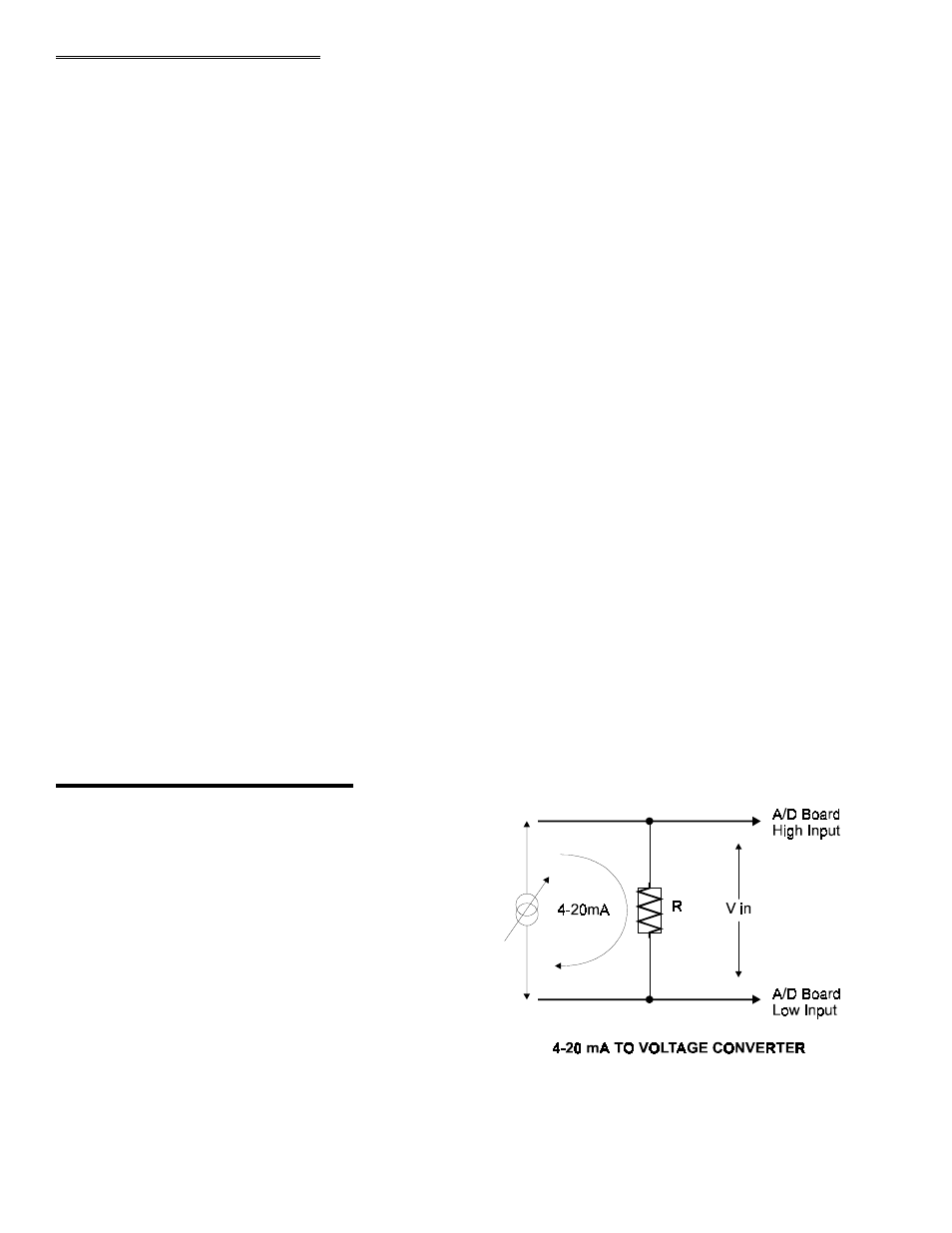5 engineering units, 6 current loop 4-20 ma – Measurement Computing CIO-DAS16/330 User Manual
Page 30

6.5 ENGINEERING UNITS
When a program uses an A/D board to acquire data, the data file is filled with numbers like those above.
To translate the A/D numbers back into the engineering units of the original measurement, we need to know:
The sensor's voltage output per engineering unit.
The full scale range of the board at the time the measurement was made.
The resolution of the converter.
Here is an example from the application note on interfacing a Voland TA to a PC found elsewhere in this manual.
The TA measures resistance in grams between +500 and -500 grams.
The voltage output of the instruments is +2.5 volts to -2.5 volts.
The voltage output corresponds to the grams of pressure exactly, so:
Span = +/- 500 grams = 1000 grams.
Span +/- 2.5 volts = 5 volts.
5 volts / 1000 grams = 0.005 volts per gram.
The A/D was set for +/- 2.5 volts = 5 volts full scale.
5 volts / 4096 counts = 0.00122 volts per bit.
If the number in the file for one reading was 3061, then
3061 * 0.00122 = 3.7632 volts.
3.7632 volts / 0.005 volts per gram = 735 grams.
Now shift from full scale to +/- scale.
735 grams full scale - 500 = 235 grams of positive pressure.
It may look like a lot of steps because it is presented that way here for clarity only. It could be expressed as a single
equation in a spreadsheet.
6.6 CURRENT LOOP 4-20 MA
Although the inputs of a CIO-AD board are voltage inputs,
it is easy to convert a current to a proportional voltage
which may be measured by the CIO-AD board. The current
is converted to a proportional voltage by the formula
V=I*R.
For example, if the CIO-AD board is set up to read 0 to 5
volts, then:
5 volts / 0.02 Amps = 250 Ohm shunt resistor (Figure 6-6).
So a full 20 mA will register 5 volts and 4 mA will register 1 volt.
Figure 6-6. Current to Voltage Conversion
26
